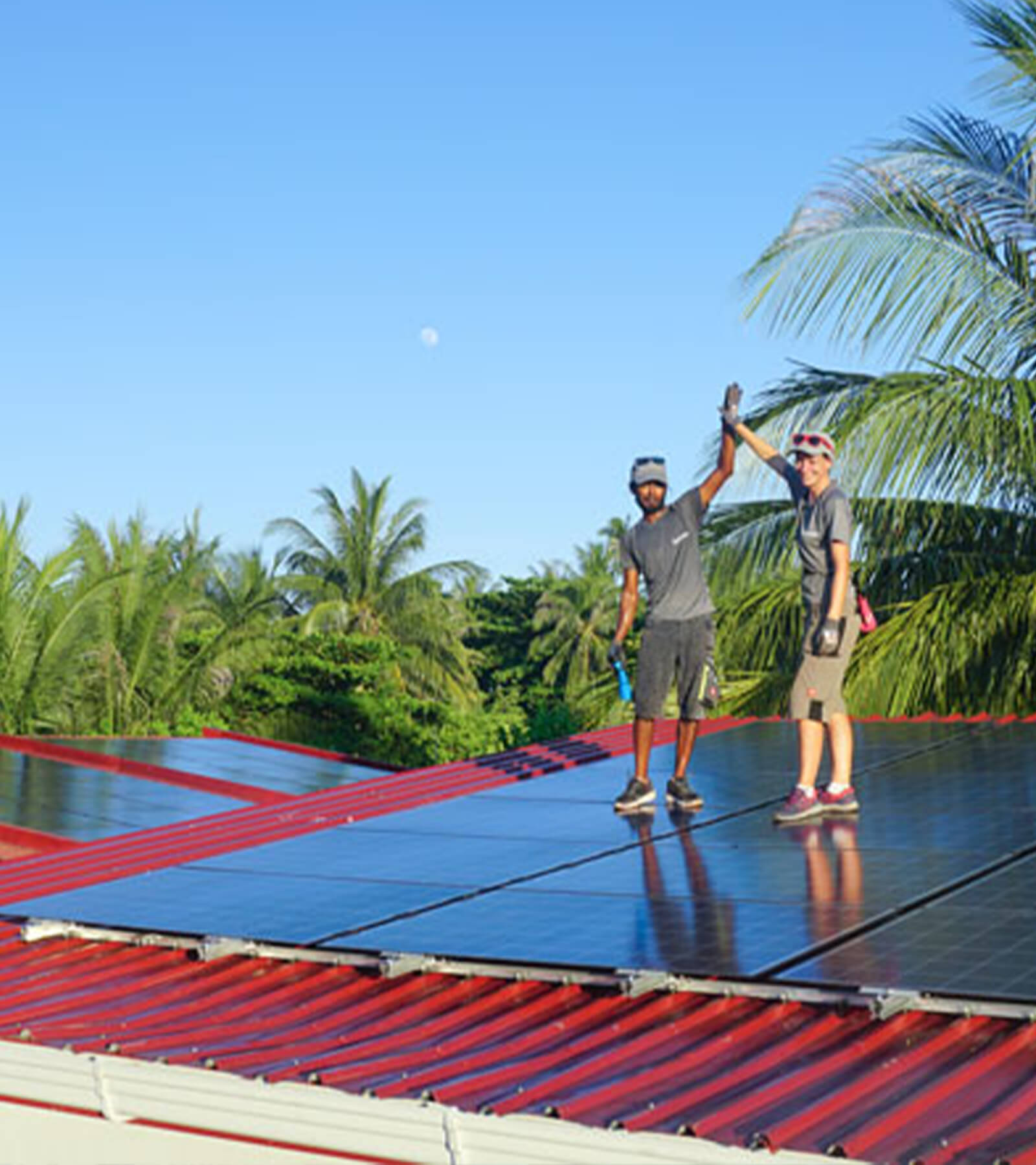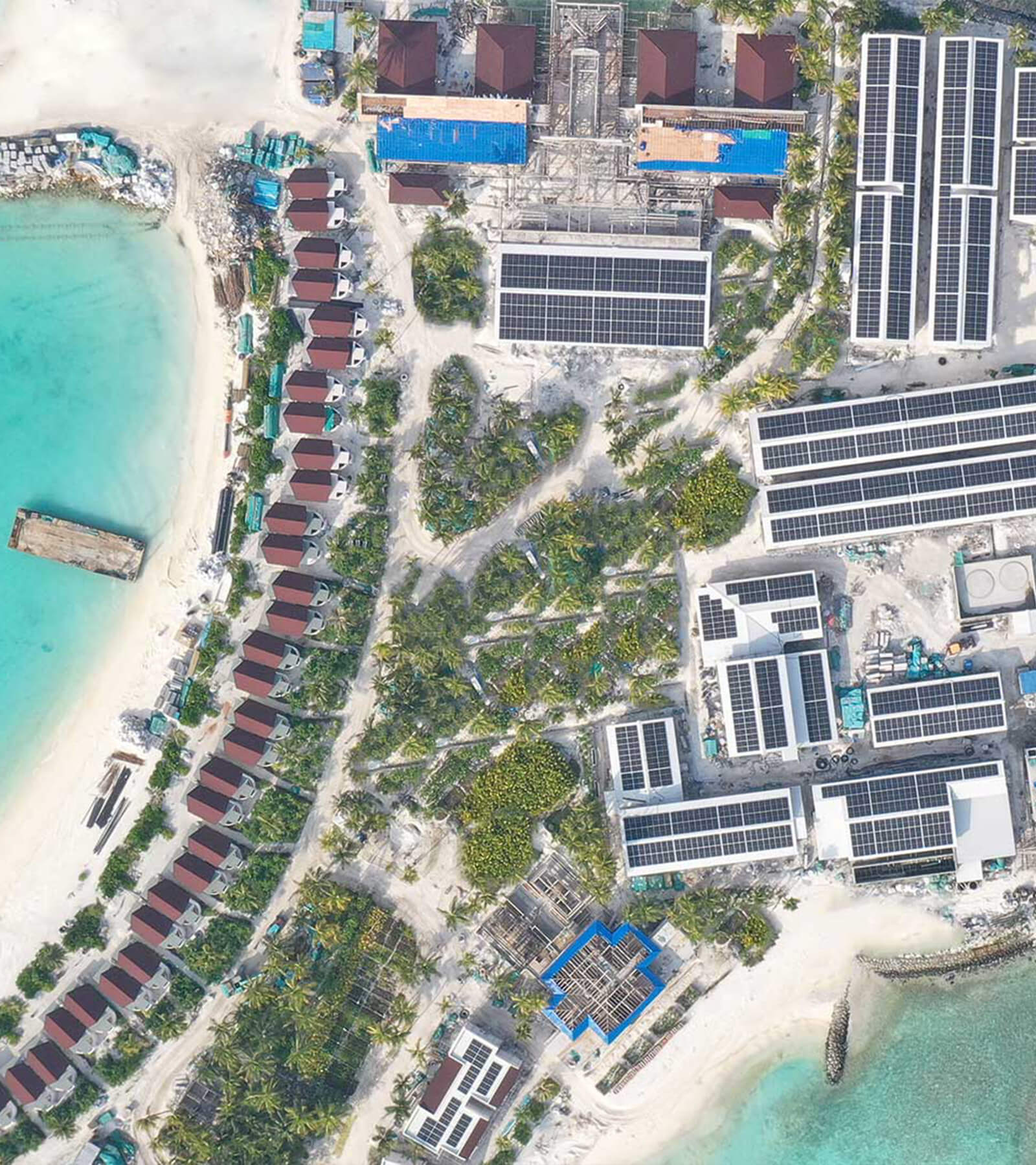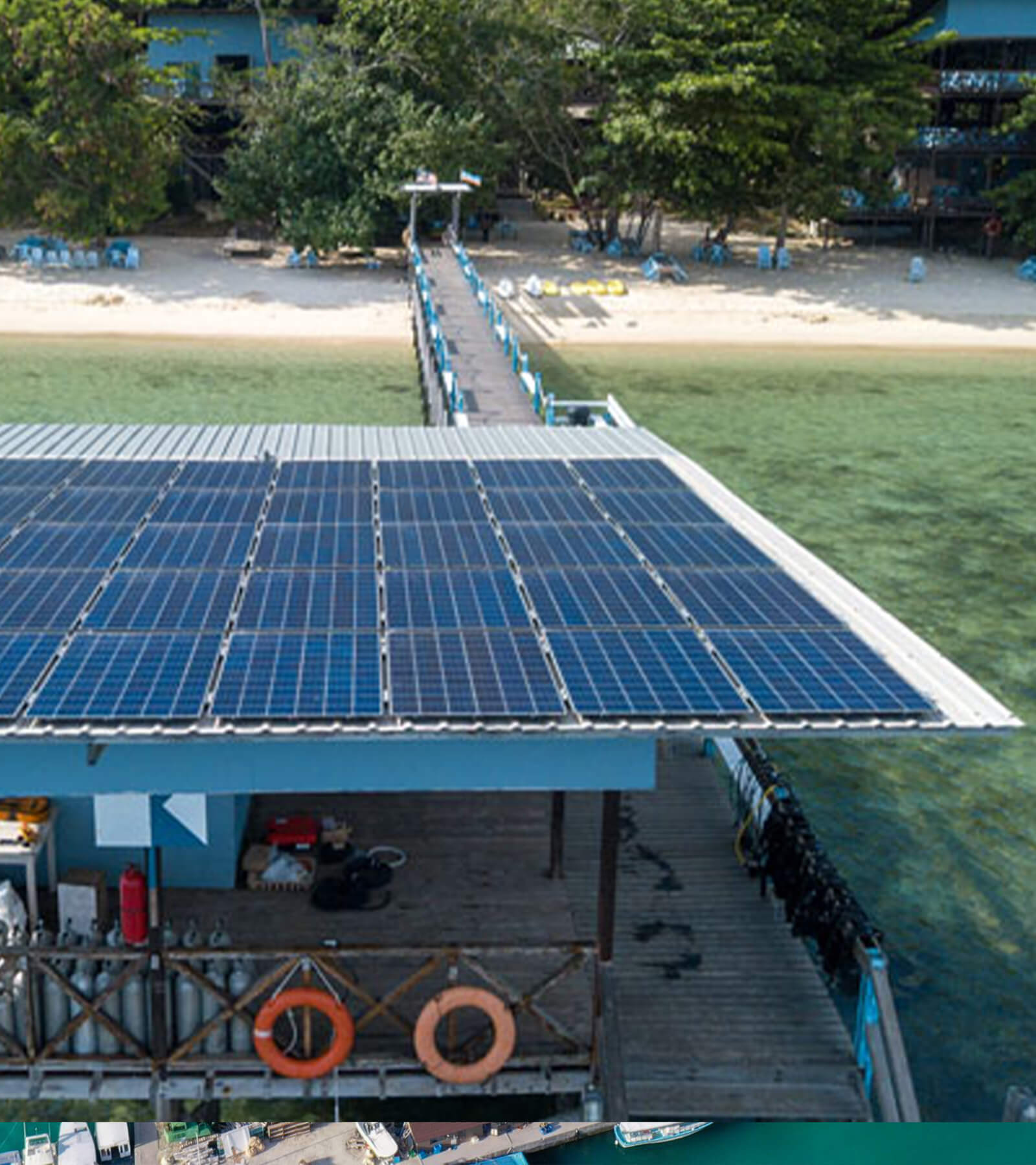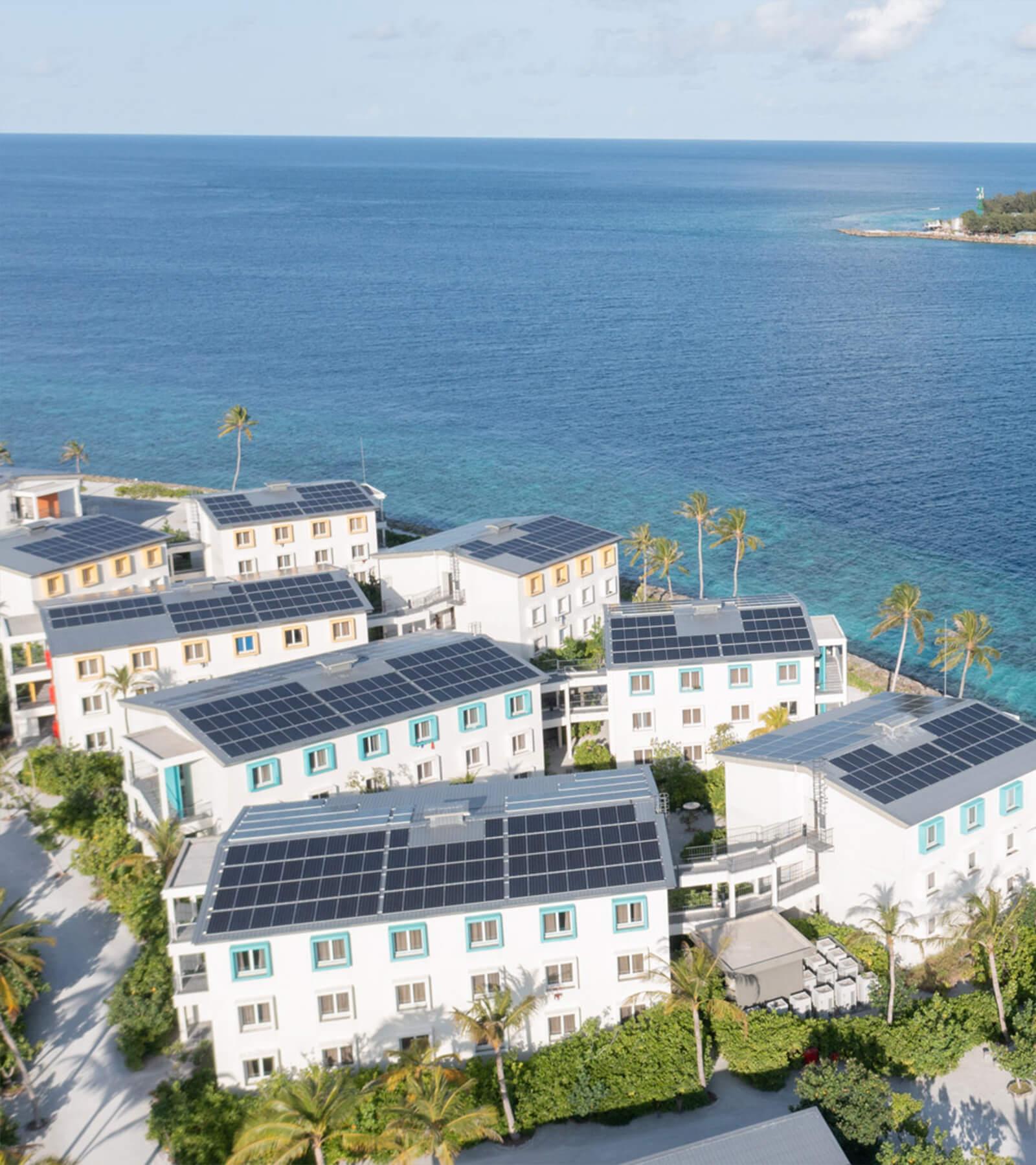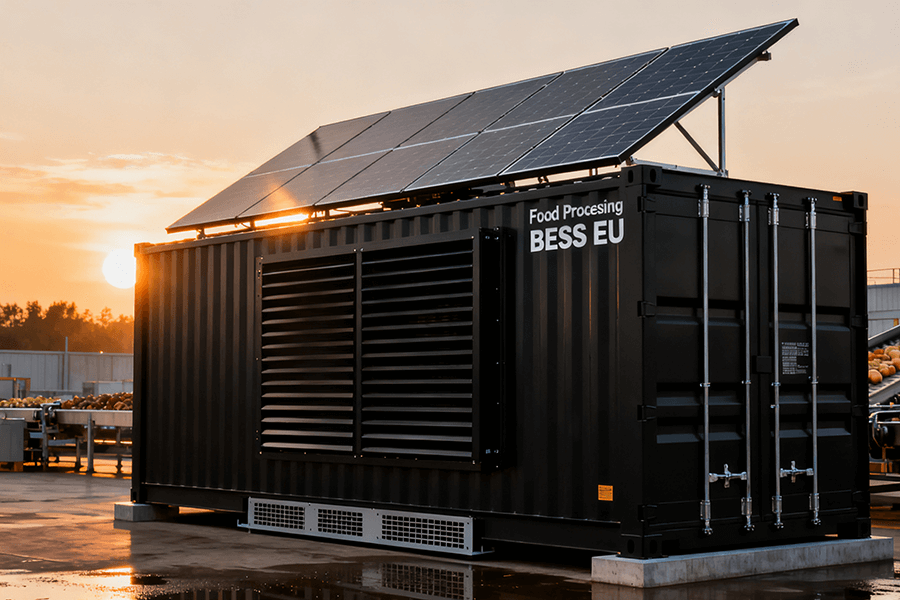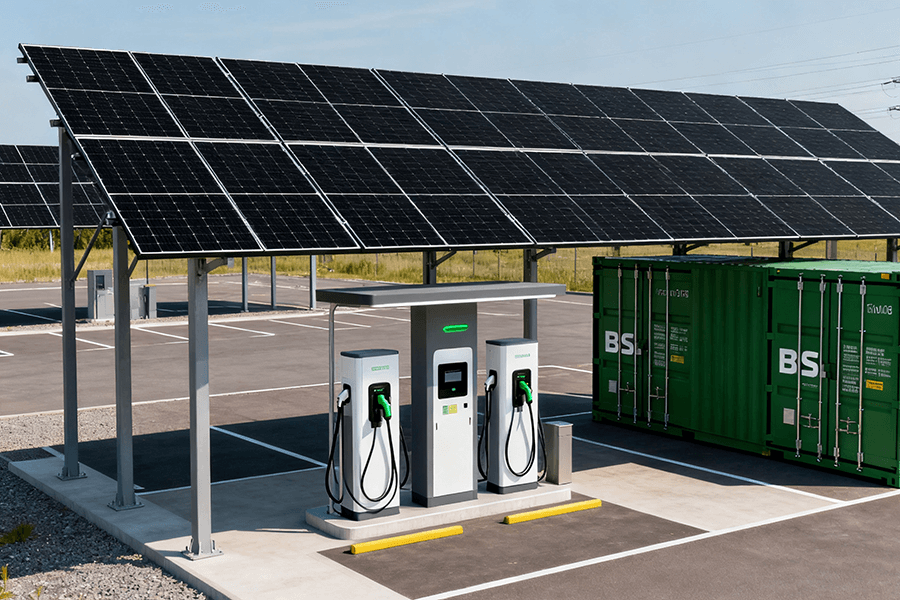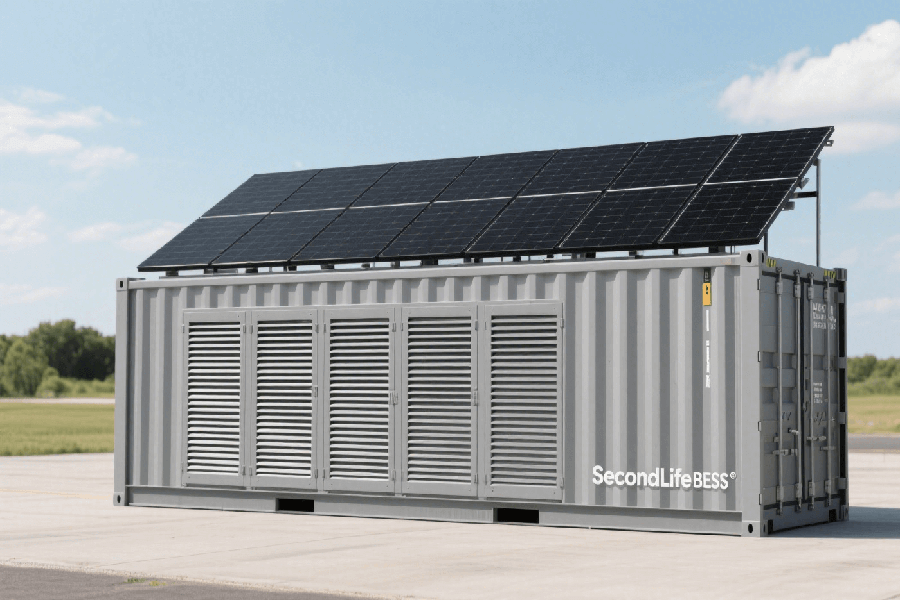
Have you ever pondered the fate of electric vehicle (EV) batteries once they’ve traversed enough miles to impress even the most dedicated road trip enthusiasts? Contrary to common assumptions, these powerhouses don’t simply fade into obscurity, collecting dust in a distant scrapyard.
Enter the Second-Life BESS (Battery Energy Storage System) Container—a strategic cornerstone within the EU’s Circular Economy Action Plan. This innovative solution repurposes retired EV batteries, transforming them into indispensable assets for solar energy storage. But this isn’t mere environmental posturing; it’s a revolutionary approach with far-reaching implications.
Let’s take a closer look at the key components and benefits:
| Aspect | Description |
|---|---|
| Core Concept | Reusing EV batteries that no longer meet automotive performance standards but still retain significant storage capacity. |
| Circular Economy Impact | Extends the lifespan of valuable battery materials, reducing the demand for raw material extraction and minimizing environmental impact. |
| Solar Storage Synergy | Integrates seamlessly with solar power systems, storing excess energy generated during peak sunlight hours for use during periods of high demand or low sunlight. |
First Act: From EVs to Energy Vaults
The EU’s Circular Economy Action Plan isn’t a stuffy policy—it’s a revolutionary blueprint challenging the ingrained “use once, toss away” culture. At its core lies the concept of extending product lifecycles, reducing waste, and optimizing resource utilization. A prime example of this in action is Acciona’s Extremadura project, where a 2 MW/5 MWh Battery Energy Storage System (BESS) Container is operational. This innovative setup repurposes batteries that once served as the powerhouses for electric vehicles, giving them a new lease on life.
| Component | Specification |
|---|---|
| Capacity | 2 MW/5 MWh |
| Battery Source | Recycled from electric cars |
This reuse of batteries represents a significant career pivot in the energy storage realm. After their high-performance stint powering electric vehicles at rapid speeds, these batteries have transitioned into efficient energy storage specialists. They now function like highly absorbent sponges, soaking up excess solar energy generated during peak production hours and releasing it when demand spikes. This transition is analogous to a Broadway star making a successful leap to a popular Netflix show—while the stage may have changed, the underlying talent and value remain, shining brightly in a new spotlight and contributing to a more sustainable energy future.
Eco Win: Why Mother Nature’s High-Fiving Us
Let’s delve into the statistics that truly underscore the environmental and economic prowess of second-life BESS containers:
Recyclability Breakdown
| Component | Recyclability Rate |
|---|---|
| Battery Modules | 95% |
| Container Structure | 98% |
| Electronic Sub-systems | 92% |
This 95% recyclability rate isn’t just a number—it represents a paradigm shift in waste management. By reusing battery energy storage systems (BESS), we’re effectively diverting tons of electronic waste from landfills, where hazardous materials could leach into the environment.
Carbon Footprint Comparison
| Battery Type | Carbon Emissions (kg CO₂-eq/kWh) |
|---|---|
| New Lithium-Ion | 150-200 |
| Second-Life BESS | 105-140 |
Second-life BESS containers slash the carbon footprint by 30%, thanks to reduced mining operations, minimized refining processes, and extended product lifecycles. To put it in perspective:
- Producing new batteries demands vast amounts of lithium, cobalt, and nickel—mining these resources often comes with significant environmental degradation, from habitat destruction to water pollution.
- Second-life batteries bypass much of this resource-intensive production, focusing instead on reusing and repurposing existing materials.
Think of it like this: annually replacing batteries is akin to discarding a perfectly functional smartphone simply because its case shows signs of wear. Second-life BESS containers offer a smarter alternative—upgrading the storage system while retaining the core functionality. It’s a cost-effective, eco-conscious choice that not only saves resources but also reduces emissions, earning a resounding “atta girl” from Mother Earth.
Numbers Don’t Lie: Cost & Performance
In 2025, a revolutionary price point has disrupted the battery market landscape: €98/kWh for second-life Lithium Iron Phosphate (LFP) batteries. This landmark figure not only challenges the long-held belief that sustainable solutions demand exorbitant costs but also ushers in a new era of affordability in energy storage. It serves as a compelling testament that environmental stewardship and economic viability can coexist harmoniously, debunking the myth of an inherent trade-off between ecological responsibility and financial prudence.
The concept of “second-life” batteries warrants clarification, as it is often misinterpreted as synonymous with diminished quality or performance. In reality, these repurposed energy storage units undergo meticulous refurbishment and stringent quality control processes, ensuring their reliability and longevity. Rigorous testing protocols have revealed remarkable resilience in second-life LFP batteries, which retain **85% of their original capacity even after an astonishing 5,000 charge-discharge cycles. To contextualize this feat, consider the following illustrative analogy:
- Battery Performance: 85% capacity retention after 5,000 cycles
- Marathon Equivalent: Completing 85% of a race, having already covered a cumulative distance of 5,000 miles
This endurance is a testament to the robust engineering and inherent durability of LFP technology. Second-life LFP batteries are not mere budget alternatives; they are proven workhorses in the energy storage sector, capable of delivering consistent performance over extended operational lifespans. Their ability to balance cost-effectiveness with reliability makes them an attractive proposition for a wide range of applications, from residential energy management systems to large-scale grid storage solutions.
Real-World Win: Germany’s Solar Park
In 2025, a transformative initiative took shape at a German solar park, embodying the core principle of “zero waste” in renewable energy management. This innovative project involved the installation of a 10 MWh second-life Battery Energy Storage System (BESS) Container, a strategic move that delivered extraordinary results. Post-implementation, the solar park witnessed a substantial 22% reduction in curtailment rates, marking a significant milestone in sustainable energy utilization.
For readers unfamiliar with the term, curtailment represents a critical challenge in the renewable energy sector. It occurs when solar panels generate an excess of electricity that surpasses immediate consumption needs or the capacity of the electrical grid to absorb it. As a result, this surplus power is forcibly curtailed or “discarded,” leading to a waste of valuable clean energy resources. To provide a relatable analogy:
| Scenario | Traditional Energy Curtailment | Second-Life BESS Solution |
|---|---|---|
| Culinary Comparison | Baking a cake and throwing away 25% because the plate is full | Using an additional plate to save the excess for later |
| Energy Context | Solar panels producing surplus power, which is wasted | Storing surplus solar energy in a BESS for future use |
Enter the BESS Container, a game-changing technological solution that addresses the curtailment challenge head-on. Functioning as an advanced energy storage hub, it captures the surplus electricity generated during periods of peak solar production. This stored energy can then be released back into the grid during times of high demand or when solar generation is low, effectively preventing energy waste. By ensuring that every watt of clean energy is utilized efficiently, the BESS Container not only optimizes the performance of solar power generation but also plays a pivotal role in driving the transition towards a more sustainable and circular energy economy.
The Fine Print: Safety & Payoffs
Before these containers are seamlessly integrated into the energy grid, a critical milestone must be achieved: successful completion of the UN38.3 certification. Widely regarded as the gold standard in the global energy sector, this certification serves as the ultimate validation of a product’s safety, providing users with the assurance that the BESS containers are fit for use.
The UN38.3 certification process is a comprehensive and meticulous evaluation that scrutinizes every aspect of the battery energy storage system containers. It assesses the following key areas:
- Chemical Stability: Ensuring that the battery chemicals remain stable under various operating conditions, preventing chemical reactions that could lead to leaks, fires, or explosions.
- Thermal Resistance: Testing the containers’ ability to withstand extreme temperatures, both high and low, without compromising performance or safety.
- Mechanical Integrity: Subjecting the containers to rigorous mechanical stress tests, including shock, vibration, and impact, to verify their durability and reliability.
By adhering to these stringent standards, manufacturers can guarantee that each second-life BESS container is free from defective or rogue batteries. This not only eliminates potential safety hazards but also ensures consistent and reliable performance throughout the container’s lifespan.
However, the advantages of these second-life BESS containers extend far beyond safety. One of the most significant benefits is their impressive 3.8-year payback period. To illustrate the financial viability of this investment, consider the following comparison:
| Aspect | Traditional BESS | Second-Life BESS Container |
|---|---|---|
| Initial Cost | Higher | Significantly Lower |
| Payback Period | 5-7 years | 3.8 years |
| Environmental Impact | Higher | Reduced, through reuse of batteries |
This table highlights the cost-effectiveness and environmental benefits of choosing second-life BESS containers over traditional battery storage solutions.
| Investment Option | Average Payback Period |
|---|---|
| Second-Life BESS Container | 3.8 years |
| Kitchen Renovation | 5 – 7 years |
| High-End Espresso Machine | 2 – 4 years (without revenue generation) |
As illustrated in the table above, investing in second-life BESS containers not only offers a faster return on investment compared to typical home improvement projects but also unlocks the potential for sustainable profits. It’s a win-win scenario: invest today in a solution that not only pays for itself quickly but also contributes to a greener, more circular economy, allowing you to “sip” on the fruits of your sustainable investment for years to come.
P.S. From Maxbo Solar—We’re Obsessed
At Maxbo Solar, our enthusiasm for second-life BESS containers knows no bounds. We’re like kids in a candy store, captivated by the endless possibilities these innovative solutions offer. Our passion lies in extracting every ounce of value from resources, and these containers perfectly embody our commitment to sustainability and efficiency—they’re truly the shining examples of our work.
Who Can Benefit?
- Solar Park Operators: Tired of energy going to waste? Our second-life BESS containers are the answer. Say goodbye to inefficiencies and hello to optimized energy storage that maximizes the utilization of your solar power.
- Green Advocates: If you’re on a mission to make a positive impact on the environment, these containers are your allies. Join us in our quest to create a more sustainable future.
Integration Made Easy
Wondering how to integrate these remarkable BESS containers into your operations? Look no further. We’ve got you covered with comprehensive guidance and support at every step of the way. From initial planning to seamless implementation, we’ll ensure a smooth transition.
Discover Our Innovation
Curious to see how we’re transforming recycled batteries into renewable gold? Head over to www.maxbo-solar.com and explore our cutting-edge projects. Witness firsthand how we’re revolutionizing the solar storage industry.
Let’s unite and make the grid greener, one second-life BESS container at a time. Together, we can create a more sustainable and energy-efficient future.

